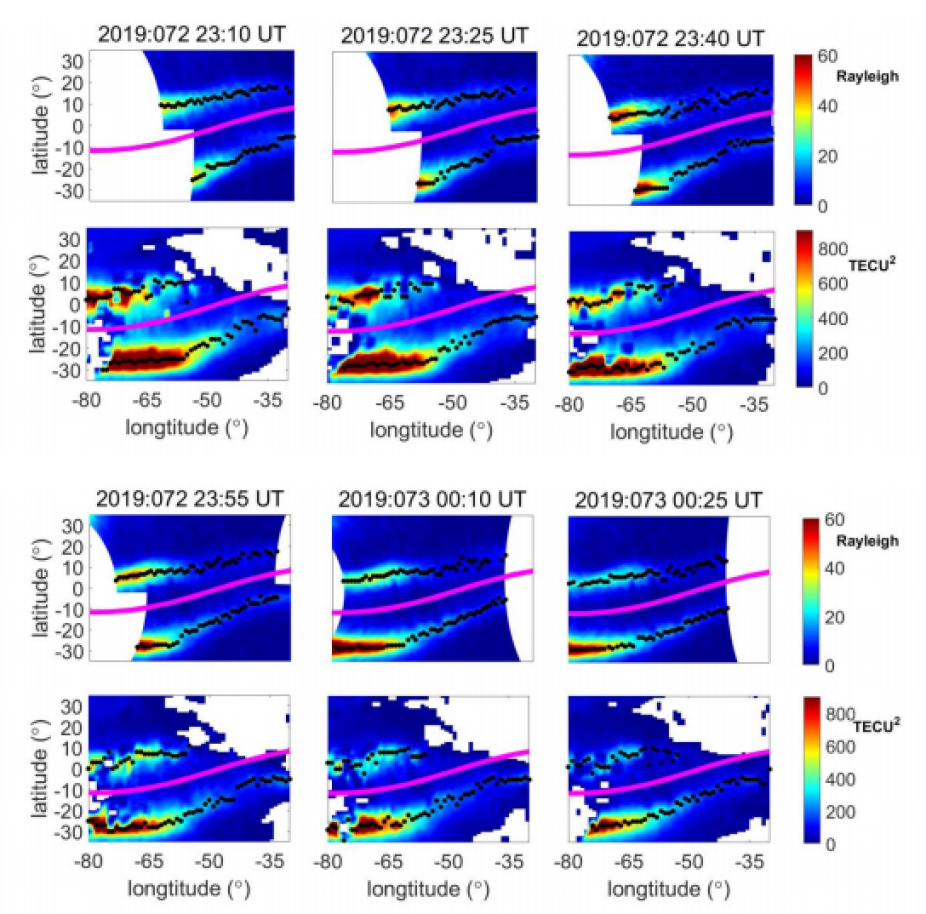ublication: Journal of Geophysical Research, Space Physics; Authors: Xuguang Cai, Alan G. Burns, Wenbin Wang, Anthea Coster, Liying Qian, Jing Liu, Stanley C. Solomon, Richard W. Eastes, Robert E. Daniell, William E. McClintock
The National Aeronautics and Space Administration (NASA) Global‐scale Observations of the Limb and Disk (GOLD) has been imaging the thermosphere and ionosphere since October 2018. It provides continuous measurements over a large area from its geostationary orbit. The unambiguous 2-dimensional (2D) maps of OI 135.6 nm radiance retrieved from GOLD after sunset are compared with the total electron content (TEC) maps measured by GPS receivers in the American sector. The OI 135.6 nm radiance observed by GOLD is an indicator of the peak electron density of the ionosphere F2 region, while the TEC is the total electron density in the column.

The comparison between the GOLD map and TEC2 map on DOY 72 in 2019 23:10-23:40 (top) and 23:55-24:25 (bottom). The white part stands for the data unavailability and the pink line is the geomagnetic equator. The black points stand for the location of the peaks of the EIA.
Our comparisons show that the two datasets match each other very well in the equatorial ionization anomaly (EIA) morphology and its seasonal variability. Equatorial plasma bubbles (EPBs) are evident in GOLD nighttime OI 135.6 radiance. Corresponding depletions are shown in TEC maps, but without GOLD data as a reference, it is difficult to discern that the depletions are EPBs. In addition, both GOLD 135.6 radiance and TEC maps observed third peaks of electron density poleward of the southern EIA crests. Furthermore, both show that the ionosphere after sunset is quite dynamic and has strong day-to-day variability. In all, the GOLD and TEC have valuable synergy to allow us to gain a better understanding of the equatorial ionosphere.
Link to paper: Comparison of GOLD Nighttime Measurements With Total Electron Content: Preliminary Results